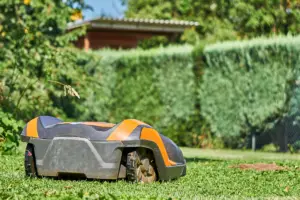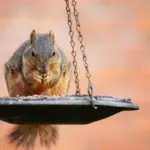Baby squirrels are some of the most adorable creatures in the animal kingdom. They are born hairless and blind, and they rely heavily on their mother for survival.
One of the most important aspects of their survival is their ability to drink water. But how do baby squirrels drink water?
From birth to the tenth week, baby squirrels drink milk from their mother instead of water.
The mother’s milk is highly nutritious, fatty, and hydrating, and it provides everything the baby squirrels need to grow and develop.
As they grow older and start to venture out of the nest, they begin to forage for nuts, grains, and berries, and they also start to drink water from outside sources.
Baby squirrels get their water from various sources, including dew, fruits, plants, vegetables, birdbaths, fountains, and plant roots.
In the jungle, they may drink from rivers, lakes, or ponds. Although they get most of their hydration from their mother’s milk in the early weeks, they still need to drink water as they grow older.
In the next section, we will explore in more detail how baby squirrels drink water and what to do if you find an orphaned baby squirrel that needs help.

Table of Contents
Squirrel Anatomy
Squirrels are small, agile rodents that are found all over the world. They are known for their bushy tails, sharp teeth, and nimble movements.
Understanding the anatomy of a squirrel can help us understand how they drink and eat.
Teeth
Squirrels have four large incisors in the front of their mouths that never stop growing. These teeth are used to gnaw through tough materials like nuts and seeds.
Squirrels also have molars in the back of their mouths that are used for crushing and grinding food.
Mouth and Tongue
Squirrels have small mouths and long, narrow tongues that are used to lap up liquids. Their tongues are covered in tiny, backward-facing spines that help them grip food and liquids.
Squirrels do not have lips, which means that they cannot create suction to drink as humans can.
Digestive System
Squirrels have a simple digestive system that is designed to break down nuts and seeds.
Their stomachs have two chambers, one of which is used to store food until it can be broken down further.
Squirrels also have a large cecum, which is a pouch in their digestive tract that contains bacteria that can break down tough plant material.
In summary, squirrels have specialized teeth, mouths, and digestive systems that allow them to eat and drink in unique ways.
Understanding these adaptations can help us better appreciate these fascinating animals.
Squirrel Milk
Composition
Squirrel milk is a rich source of fat and protein, which is essential for the growth and development of baby squirrels.
Milk contains about 22% fat and 18% protein, making it a high-energy food for the young ones.
Squirrel milk is also high in calcium, phosphorus, and other minerals that are important for bone growth.
Production
Squirrels produce milk in their mammary glands, which are located in the abdominal region.
The milk is secreted by the mammary glands and is fed to the young through teats located on the underside of the mother’s body.
Baby squirrels rely on their mother’s milk for the first few weeks of their life. As they grow older, they start to eat solid foods, but they still rely on their mother’s milk for nutrition.
In some cases, baby squirrels may be orphaned or abandoned, and they need to be hand-fed with a milk replacement formula.
Squirrel milk replacement formulas are available in pet stores or online. These formulas are specially designed to mimic the composition of squirrel milk, providing the necessary nutrients for the young ones.
The formulas are usually made from a combination of cow’s milk, eggs, and other ingredients.
In conclusion, squirrel milk is a vital source of nutrition for baby squirrels. It is rich in fat, protein, and minerals, which are essential for the growth and development of young ones.
If you are caring for a baby squirrel, it is important to provide them with a milk replacement formula that mimics the composition of squirrel milk.
Squirrel Drinking Behavior
Baby squirrels are born blind, deaf, and hairless. They rely solely on their mother’s milk for the first 10 to 12 weeks of their life.
As they mature, they begin to forage for nuts, grains, and berries. Like all animals, baby squirrels need water to survive. In this section, we will explore the drinking behavior of baby squirrels.
Drinking Technique
Baby squirrels can drink water as soon as they are able to support their own body weight. They usually learn to drink water by watching their mother.
When they are first learning to drink, they may struggle to get the water into their mouth. They may dip their nose into the water or try to lick it off their fur.
As they get more practice, they become more skilled at drinking.
Frequency and Amount
Baby squirrels need to drink water frequently to stay hydrated. They may drink water every few hours, depending on their age and activity level.
The amount of water they drink also varies. Younger squirrels may only drink a few drops at a time, while older squirrels can drink up to half an ounce of water per day.
Water Sources
Baby squirrels can get water from a variety of sources. In the wild, they may drink from streams, puddles, or other sources of standing water.
They may also get water from the food they eat. In captivity, baby squirrels should be provided with fresh, clean water at all times. They may also be offered water-rich foods like fruits and vegetables.
In conclusion, baby squirrels need water to survive just like all animals. They learn to drink water by watching their mother and may struggle at first.
They need to drink water frequently, and the amount they drink varies depending on their age and activity level.
They can get water from a variety of sources, including standing water and water-rich foods.
Conclusion
In conclusion, baby squirrels have a unique way of drinking water. They do not drink water until they are weaned from their mother’s milk at around ten weeks of age.
Before that, they get all their hydration from their mother’s milk. After weaning, they start drinking water from various sources, including dew, fruits, plants, vegetables, birdbaths, fountains, and plant roots.
It is essential to note that baby squirrels need to be kept warm, especially during the first few weeks of their life.
They are unable to regulate their body temperature, and if they get too cold, they may become sick or even die. Therefore, it is crucial to provide them with a warm and safe environment.
When feeding baby squirrels, it is important to be careful. They may suck harder than they should, causing milk to get into their lungs and eventually causing pneumonia.
Therefore, it is recommended to use a syringe or a dropper to feed them slowly and carefully.
Overall, baby squirrels have a unique way of drinking water, and it is important to understand their needs to keep them healthy and safe.
By providing them with a warm and safe environment and feeding them carefully, they can grow up to be healthy adult squirrels.
- How to Build a Planter Box for Bamboo: A Step-by-Step Guide

- Can Robotic Lawnmowers Handle Steep Slopes?

- Do You Need a Specific Lawn for a Robotic Lawnmower? Expert Advice

- Are Robotic Lawnmowers Safe for Pets and Children? Safety Features of Robotic Lawnmowers

- Why Use Robotic Lawnmowers? Advantages of Using a Robotic Lawnmower

- Is the GARDENA SILENO City 300 Cordless or Corded? A Clear Answer














